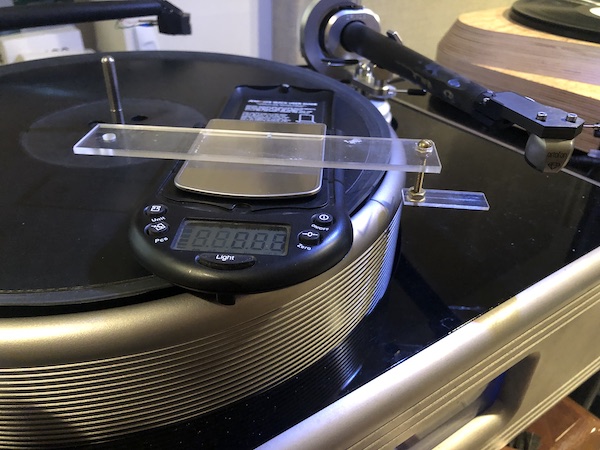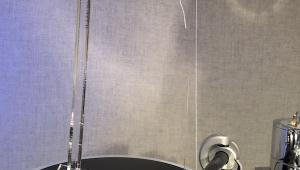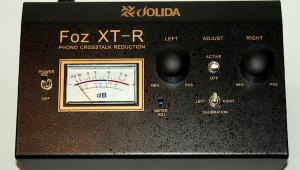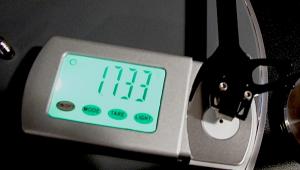No video there Michael
Beware Magnetized Stylus Pressure Gauges!
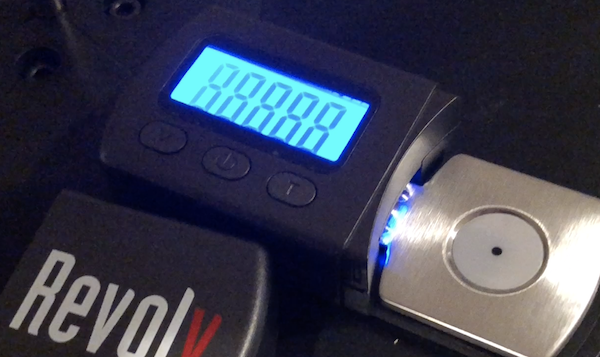
Most of these digital stylus force gauges come from the same Chinese factory, but what the company that orders and what the company gets are not always the same thing! I remember visited Audio Research and hearing a story from their QC guy Warren Gehl (he does a lot than QC, but for these purposes, let's leave it at that). He recounted that a new ARC amplifier included a small, but important China-sourced transformer. The company had auditioned many and settled on this particular one because of its measured and sonic performance. Yet when Warren auditioned the first finished amplifier off the line something sounded "off".
Eventually he discovered that while the China-sourced transformer looked and measured identical to what had been ordered, the company had changed something and hadn't told ARC. So, these things happen.
I hadn't been using this particular gauge on the SAT arm because I prefer measuring VTF at record level, which is important in arms that are stable-balanced, not neutral balanced. Arms in which the center of gravity is below the pivot are stable-balanced (which includes many if not most unipivots that have stabilizing balancing side weights hanging below the pivot), meaning they want to return to the record surface. So the higher off the record surface you measure the down force, the greater it will be compared to what it would measure at the record surface, which is where you want it to accurate. In other words, you will be tracking somewhat lighter than you actually measure on a gauge where the measuring platform is considerably above the record surface.
So short story long, even though the SAT is a gimbaled bearing arm, it is not neutrally balanced. While the designer provides a formula that allows you to measure above the record surface after which you apply added downforce based on the formula, I prefer using what you see below:
I set the Anna D using that gauge at 2.4 grams. Later I decided to quickly check the VTF using the Revolv gauge, knowing it would be somewhat higher but it was way higher so then I started doing what you see in the video and realized why: as the cartridge got close to the platform the scale began reacting! There's a magnetic reaction between the cartridge and the scale! Granted the Anna D and some other costly MC cartridges have seriously powerful magnets and so magnify this problem, if you have a gauge of this kind with any brand label on it, be sure to check out the interaction between the cartridge and the gauge as seen below.
Revolv was kinda shocked by the video and they are promising to look into it!
- Log in or register to post comments



Relaoding didn't help but when I right click on the box and click view image then the video appears.

Mine is branded Neoteck. My DRT XV-1s exhibits the same issue so perhaps naked cartridges have some interaction with the metal surround. As it's only in the 100ths of a gram I'm not worried about it. Hard to know for certain but I'd guess it isn't part of the final display when the cartridge is resting on the scale. At about $20 incl delivery it's one of the most cost effective tools I've got in my toolkit. Sure alot less expensive than the AnalogMagik software :)

Michael - I experienced this with a stylus pressure gauge I bought from a very popular audiophile supply company. Here is a link that shows what my gauge looks like, since there is no brand or model number provided:
https://www.musicdirect.com/Portals/0/Hotcakes/Data/products/00011bfc-00...
One thing to note is that the issue occurred with my Clearaudio Concept MC, but *not* with my Hana ML. At first, my local dealer thought I was nuts, but I demonstrated the issue to him. Thanks for confirming.

I just have a broken link box and no video. I reloaded and clicked the box and nothing.
I have a Project scale that I bought years ago that exhibits a "unloading" as the cartridge is lowered to the spot. It briefly reads a negative value until the stylus touches it. I filed down a 2 liter bottle lid to raise the cartridge away from the magnetic platform.
Then I bought an SME 309 tonearm that has the weights totally below the center of the arm. I didn't trust what was happening with the raised position, so I purchased a Clearaudio scale that is totally non-magnetic and reads very close to the plane of the record.
When I compared the Project (without the spacer) to the Clearaudio the difference was around .1 g, so the difference wasn't substantial, but it was repeatable.
All of this was with Dynavector cartridges. Initially a 20X2 and now a XX2 Mkii.
Matt

So this is interesting. A while back Ortofon sent an email to its dealers advising to get the cart close to the platform and then pressing "tare" to neutralize the magnetic interaction with the scale. They also offered an adapter that would extend the platform so the cart was farther out and away from the scale innards... Be that as it may, I do not get scale numbers going up or down with cart proximity, but I do get the scale to never really settle on a measurement. It sort of does, and then becomes reactivatd and drifts into another reading a few mg off from the previous one, and again, and again, etc. I have to do the measuring several times to arrive at a reading.
This has happened to me with several digital scales, not just the Ortofon... Is this related to magnertism as well?

Isaac,
Yes, the weigh bridge is somewhat magnetic on the scales that have the issue. As the cartridge gets close the the bridge the magnetism of the cartridge pulls up on the bridge and the scale reads a negative value - up until the cartridge touches down and give a reading. How much this reading is affected by the magnetic attraction of the cart and bridge is the question.
I was able to take a refrigerator magnet and see that the bridge was attracted to it.
Matt

But again I do not see variation on the scale reading as the cart is going closer or coming off of the scale patform--it remains 0.00. The variation happens when the scale is trying to settle on a reading with the cart resting on it. It does so for a second and then reactivates, settles, reactivates, settles, etc. Everytime with a reading a few milligrams off from the previous one in either direction... I was wondering if this is also caused by the strong magnetic forces around the scale.

micro vibrations of you table setup. Settles and then one of the vibrations run through it from an appliance starting up (fridge i.e.)or traffic out on your street, or something, since it only moves a few mg.
Good listening,
Z

Thanks for the suggestion... unfortunately, it is a 35lb platter, shimmed with rubber wedges for immobility and resting on decoupling feet! So, it's hard to imagine that is vibration induced.

Are you on a concrete slab? If so, I doubt my idea would be it.

By the way, that reading drifting is usually in the same direction. So an initial reading of 2.37 will resettle on 2.34, then 2.30, then 2.28, then 2.24... and so forth.

the video starts and stops as I scroll down and then disappears altogether when using Safari and seems to be missing completely with Chrome.
Cool post, however!

Thanks for this post, Michael. Your article prompted me to check all of my adjustments on my Marantz TT-15S1 w/Clearaudio Virtuoso Ebony cartridge. I have a pressure gauge with the Neoteck name on it. I did not experience the false magnetic reading that your excellent article and video showed. The gauge stayed at 0.00 as the stylus moved towards the scale platform and once the stylus was resting I got exactly the reading that Marantz recommends with this cart. All seems accurate.

Must have been a previous cartridge, perhaps the Delos. For fun I pulled out the Neoteck scale and put XV-1s on it about half a dozen times. Didn't blink until the stylus touched it. Same measurement each time.

cheap digital stylus force gauges come from China works both ways. you can weigh (vtf) and if you pull the stainless steel part you can measure the pull force. I don't know if it works properly on pull force but the gauge shows some numbers. so gauge is not magnetized.
when you get your cartridge close to stainless steel part around the dot the magnet in the cartridge will retract metal inside and the gauge will measure magnetic pull force cause you don't let go down the cartridge. when you placed stylus on the dot of gauge cartridge will still retract metal around and you will measure vtf with added mass of metal parts retracted by the cartridge.
on the other hand the method you mentioned to measure vtf at the record surface in the picture does not give you correct value either. because you are not placing stylus on top of the scale but on a transparent stick which causes momentum.

I have seen this issue with the ProJect Measure-it scales & an Ortofon Quintet Black.
Having scratched my head about this for a while, I surmised that it shouldn’t make any difference to the final measurement. And here is my thought process.......
As you hover the stylus close to the scales pad it magnetically attracts the pad upwards, to create the negative figure reading.
Then, at the exact point where the stylus touches the scale pad & before any downward force is applied, that minus reading is negated to read zero.
After that zero point, the downward pressure will give a positive reading of the effective vtf weight in the expected way.
Am I wrong thinking along these lines?
